|
|

Seto Inland Sea as seen from Megishima, Kagawa Pref.
|
|
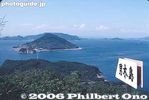
Looking toward Ogishima in Seto Inland Sea. 男木島
|
|
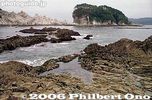
Jodogahama literally means Paradise Beach.Rikuchu-Kaigan National Park, Iwate Pref.
|
|
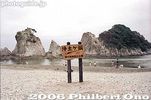
Dramatic rock formations.Rikuchu-Kaigan National Park, Iwate Pref.
|
|
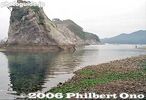
Jodogahama, Iwate Pref.Rikuchu-Kaigan National Park, Iwate Pref.
|
|

Aoshima Shrine torii and Devil's Washboard, Miyazaki
|
|
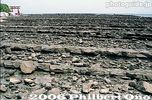
Aoshima Shrine torii and Devil's Washboard, Miyazaki 青島
|
|
|

Perfect for snorkeling, Uradome Coast, Tottori
|
|
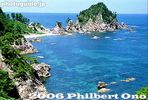
Uradome Coast, Tottori, part of the San-in Coast National Park. 山陰海岸国立公園
|
|
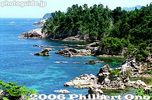
Uradome Coast, Tottori
|
|
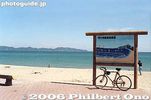
Yumigahama beach, Yonago, Tottori Pref.
|
|

View of bay, Kamaishi, Iwate
|
|

Roadside scenery on Amami-Oshima island, Kagoshima, Japan.
|
|

Scenic coast on Amami-Oshima island, Kagoshima, Japan.
|
|

Amami-Oshima coastal view.
|
|

On Amami-Oshima, Kagoshima, Amami Resort Basyayama-mura beach had pumice that came from an undersea volcano (Fukutoku-Okanoba) erupting near the Ogasawara islands (way south of Tokyo).
|
|
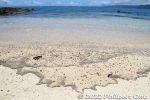
In 2021, an army of volunteers took weeks to clean up Okinawan and Amami beaches. It was almost like cleaning up an oil spill. Glad the problem has subsided.
|
|
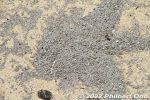
Pumice pebbles on a beach in Amami-Oshima, Kagoshima, Japan.
|
|
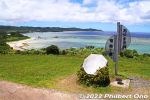
Cape Ayamaru sign and photo spot, Amami Oshima, Kagoshima.
|
|
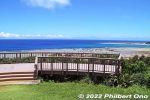
Lookout deck at Cape Ayamaru with views of the coral reef and ocean. Amami Oshima, Kagoshima.
|
|
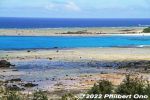
Lookout deck at Cape Ayamaru shows a beautiful aqua-blue ocean.
|
|

View of Seto Inland Sea from Mt. Fudekage in Mihara, Hiroshima. you can see Kosagi in the foreground, Sagi, and Hoso islands. In the distance on the right is Innoshima and part of the Shimanami Kaido bridge connecting Shikoku (Imabari) and Hiroshima.
|
|
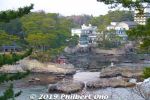
Kita-Ibaraki is a small, coastal city (pop. 42,000) with these picturesque cliffs of the Izura Coast (五浦海岸). Famous art scholar Okakura Tenshin (1863–1913 岡倉天心) found this scenic place to be a great inspiration for artists and moved here
|
|
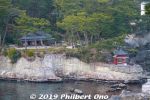
The small red pavilion is Izura Rokkakudo (五浦六角堂), the symbol of Kita-Ibaraki. Izura Rokkakudo was originally designed and built in 1905 by artist Okakura Tenshin (岡倉天心) as part of his residence. His house is on the left..
|
|
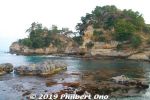
Artist-inspiring scenery around Rokkakudo, Kita-Ibaraki.
|
|
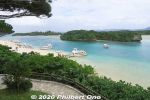
Kabira Bay on Ishigaki, perhaps the island's most famous tourist spot. Glass bottom boats to see coral and tropical fish in shallow water.
|
|
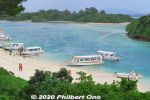
Kabira Bay, Ishigaki. It's actually a large bay and this is only a small part of it. Scenic with white beach, blue ocean, small islands and coral on the bottom.
|
|
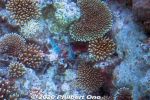
Parrot fish in Kabira Bay.
|
|
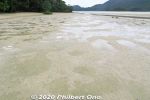
While walking here, I looked down since my intuition told me I might find something...
|
|
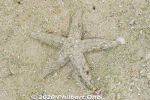
Sure enough, a well-disguised starfish moving in slow motion. Hope it's not the kind that eats coral or other native species. Kabira Bay, Ishigaki.
|
|
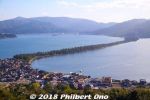
Amanohashidate is northern Kyoto's main attraction and very famous for centuries as one of Japan's Scenic Trio (Nihon Sankei 日本三景). The other two in the scenic trio are Miyajima (vermillion torii and shrine on the ocean) in Hiroshima and Matsushima (pine tree islands) near Sendai, Miyagi Prefecture. It's about 3.6 km long, totally flat, and you can cross it on foot or by bicycle (rentals available) on a dirt road in the middle. The road is lined with thousands of Japanese pine trees and closed to vehicular traffic. This view is from the northern end atop Kasamatsu Park. Near Amanohashidate Station.
|
|
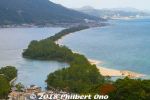
The thing about Amanohashidate is that it looks very different from different lookout points. The most popular spots to view Amanohashidate are on the hilltop on the southern end and northern end.If you have time, I highly recommend that you see it from both the southern end and northern ends. Which means you should rent a bicycle and ride across Amanohashidate.
This is from the hilltop on the southern end, from a small amusement park called Amanohashidate Viewland easily accessible via chair lift or cable car, and a short walk from Amanohashidate Station. Map: https://goo.gl/maps/yNhxjwK2ocz
This southern end connects to mainland Japan, so what you see in the distance is Tango Peninsula up north.
The left side is the west side with an enclosed, but connected ocean named Asoumi Sea. The right side is the east side with white-sand beaches facing the open ocean. Ships can still go through both sides of the sandbar through a narrow strait on the southern end.
The greenery area on the lower left facing the sandbar is Chionji Temple.
|
|

Tango Peninsula in northern Kyoto Prefecture is scenic along the coast with a number of natural features and formations.Much of the coast is part of the San'in Kaigan Geopark (山陰海岸ジオパーク) that extends from the western half (Kyotango city) of Tango Peninsula to Tottori Prefecture. San'in Kaigan Geopark is also a UNESCO Global Geopark.
|
|

These photos were taken while cycling along the Tango Peninsula.
|
|

Tango Peninsula coast.
|
|

Tango Matsushima (pine islands).
|
|
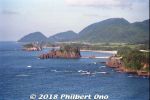
Tango Matsushima (pine islands).
|
|
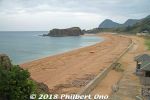
Tateiwa Rock on the Tango Peninsula, northern Kyoto. The swimming beach leading to Tateiwa is named Tateiwa Nochigahama (立岩後ヶ浜海水浴場).
|
|
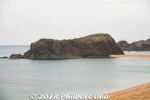
Tateiwa Rock on Tango Peninsula.Map (Tateiwa): https://goo.gl/maps/QDHmG1qArez
|
|
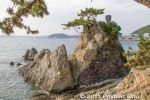
Sengan Pine tree on a craggy rock on Morito Coast. Part of Morito Daimyojin Shrine in Hayama, Kanagawa. 千貫松
|
|

Chirihama Nagisa Driveway in Hakui, Ishikawa is Japan's only beach where motor vehicles are permitted to run as a public thoroughfare. It extends for about 8 km. It goes parallel to another highway inland, so this beach road is more for tourists. Note that this beach may be closed to traffic in bad weather.
|
|

Even tour buses can easily drive on the beach. One of the coolest things I ever saw in Japan.Chirihama Nagisa Driveway in Hakui, Ishikawa.
|
|

The sand grains are about half the size of normal sand, resulting in a very packed and solid sandy surface. Solid enough for vehicles.Chirihama Nagisa Driveway in Hakui, Ishikawa.
|
|

Senmaida in Shiroyone, Wajima is one of Japan's most famous terraced rice paddies. It's in a remote location (10 km from central Wajima), but very picturesque with the ocean (Sea of Japan) right below it. Senmaida literally means "One-thousand rice terraces."
|
|

Volunteers plant and harvest the rice here. The rice paddies are owned by multiple owners who meet ownership requirements.
|
|

There was this scenic spot on Rebun, so we got out of the car and took a look (and swim).
|
|
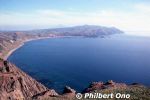
Amazing how this little island of Rebun can pack so many sights. Must be wondrous when the flowers are in bloom.
|
|

Rebun sunset in Hokkaido.
|
|

The Sands of Tottori. Every prefecture has something nationally (and sometimes internationally) famous. In the case of Tottori, it's definitely the sand dunes (sakyu in Japanese).It's on the beach facing the Sea of Japan. The dunes were formed by the ocean currents that deposited the sand on the coast for 100,000 years or so. I find that amazing since most of the beaches I know have the ocean currents eat away the sand.
|
|

The San'in coast has lots of little islands and rocks. This is Japan's No. 1 sand dunes for tourists. Quite white and convenient to get here.
|
|

The sand dunes can be pretty steep, but not dangerous. They have downhill sand boarding.
|
|
|
|

Over many years, strong winds blew the ocean sand onto the beach to form the Tottori Sand dunes.
|
|

Very dramatic ocean at Tottori Sand Dunes.
|
|

On the northern tip of Iriomote is scenic Hoshi-suna Beach. Famous for star-shaped sand grains, but hard to find. 西表 星砂の浜Map here
|
|

Iriomote Hoshizuna Beach.
|
|
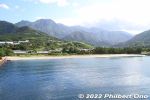
Yakushima's Miyanoura Port has nice mountain views when it's not foggy/rainy.
|
|
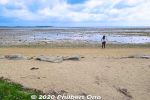
Manta Beach on Yubu. マンタの浜
|
|
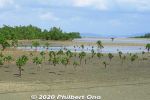
Iriomote mangroves.
|
|
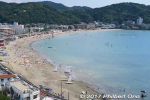
Zushi was developed as a seaside resort from the 1960s. Celebrities who had homes here include Shintaro Ishihara, novelist and former Tokyo governor.
|
|
|
|
|
|
|